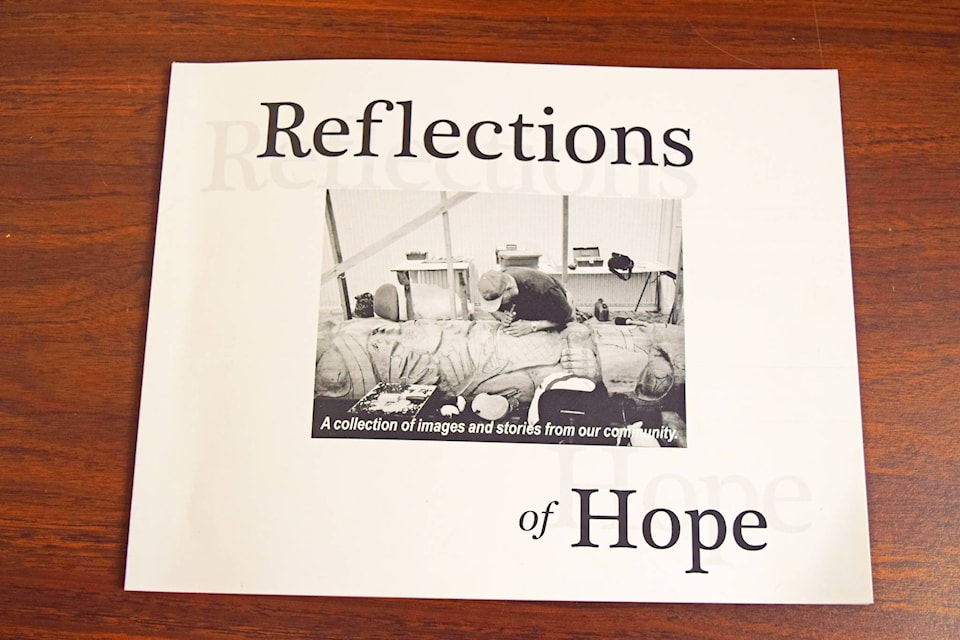Melanie Monds may have left her position as Positive Living North’s manager, but she will be part of a lasting legacy.
“[Reflections of Hope] is my swan song,” she said.
The recently-released photo book comes from an annual calendar project inspired by the Hope in Shadows photo project in Vancouver’s Lower East Side.
“How we did it is we handed out [disposable] cameras, and if you brought your camera back you got five bucks. We’d get everything developed … And then the last year we did it, there was a pop-up gallery on Main Street and we were able to put all the photos up, and the community voted,” said Monds.
“We had the board at the market for a couple of weeks, we’d leave it outside Mountain Eagle Books, next to Bugwood Bean, and people could just [pick] which ones they thought, so it was a community vote. We had a board [at PLN] for a while, so participants could vote for the one that they wanted to win,” Monds explained.
The original Reflections of Hope calendar project began with Michele Johnson in 2005; Johnson raised awareness about homelessness and at-risk populations for the Smithers Community Services Association until she moved away in 2007. PLN took the project on in 2009. Monds said it was one of the first things she did when she started working for PLN nine-and-a-half years ago.
“Being that [Michele Johnson’s] a good friend of mine, I was trying to come up with ideas of things to do, and she said, ‘Hey, that was really successful when we did the camera project.’ … I asked a lot of people, because many of the people who come in here were part of the original project that she did. And they were like, ‘Yeah!’ They really, really enjoyed it.”
Monds called it “a simple project with high impact.”
“So many people carry so many labels that it was an opportunity for some of them to drop some of the labels, and to be an artist … Many of the people have come in here saying, ‘I’m a great artist, I’m a great photographer, I’m a fantastic musician,’ and I know that. But cost is prohibitive, right? If you’re living lower income, if you’re on disability or income assistance, you don’t have a lot of money to do these things that you want to do. That’s why we did it.”
With technology changing and disposable cameras being harder to come by, the project has become too expensive and difficult to maintain.
“This project had kind of gone through its cycle after doing it for seven years or so … it was like, okay, how do we end this? But we needed to end it in a good way, so we took all the pictures and, with the funding from the Wetzin’Kwa Community Forest, we were able to create a book,” said Monds.
She said the book is dedicated to all of the project’s participants, both past and present.
“We’ve lost so many people who have been part of the project. And just to be able to have a document that isn’t dated, where people can reflect and see the ones, see the people that we’ve lost… that really is an unintended outcome.”
“To sum it up, really, this was about creating a mechanism to foster inclusion and providing people an opportunity to just share with fellow community members, and to acknowledge that we’re all part of the community. And to see what we have in common instead of just so much of what our differences are.”
The book is currently being sold at Mountain Eagle Books for $15, and there is a copy available for loan at Smithers Public Library.
